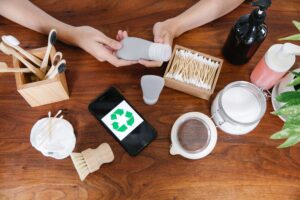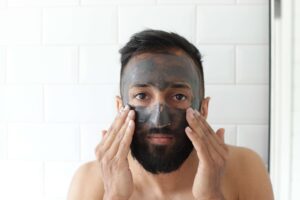What Do They Really Mean?

In the ever-evolving landscape of beauty and skincare, the term “clean beauty” has become a prominent buzzword, but what does it truly entail? As consumers increasingly prioritize health, sustainability, and transparency, deciphering the language of clean beauty is essential. This blog aims to demystify the buzzwords associated with clean beauty, empowering you to make informed choices for your skincare and beauty routine.
Understanding Clean Beauty
Non-Toxic: The term “non-toxic” in clean beauty emphasizes the exclusion of harmful ingredients such as parabens, sulfates, and phthalates. Choosing non-toxic products reduces exposure to potentially harmful substances that may have adverse effects on your health.
Cruelty-Free: Clean beauty often aligns with ethical practices, and “cruelty-free” signifies that a product and its ingredients were not tested on animals. Opting for cruelty-free products supports a compassionate approach to beauty, ensuring that no animals are harmed in the production process.
Sustainable: Sustainability in clean beauty extends beyond product formulations to encompass eco-friendly packaging and responsible sourcing of ingredients. Look for products with recyclable packaging and brands committed to minimizing their environmental impact.
Natural and Organic: “Natural” and “organic” are often used interchangeably, but they have distinct meanings. “Natural” implies that ingredients are derived from nature, while “organic” indicates that these ingredients were grown without synthetic pesticides or fertilizers. Be mindful of certifications like USDA Organic for a clearer understanding.
Vegan: Vegan beauty products exclude animal-derived ingredients. While cruelty-free products ensure no animal testing, vegan products go a step further by avoiding any animal by-products, making them suitable for those following a vegan lifestyle.
Decoding Ingredient Lists
Parabens: Often flagged as potentially harmful, parabens are preservatives commonly found in cosmetics. Clean beauty avoids parabens due to concerns about their possible link to hormonal disruption. Look for paraben-free alternatives for a cleaner skincare routine.
Sulfates: Sulfates, such as sodium lauryl sulfate, are commonly used in cleansers for their foaming properties. However, they can be harsh and drying. Clean beauty opts for sulfate-free alternatives to maintain a gentle approach to skincare.
Phthalates: Phthalates are plasticizers used to enhance the texture of products. Clean beauty avoids these due to concerns about their potential impact on endocrine function. Choosing phthalate-free products supports a more health-conscious beauty regimen.
Mineral Oil: Derived from petroleum, mineral oil is a common ingredient in skincare but is avoided in clean beauty due to its potential to clog pores and lack of nutritional benefits. Clean alternatives use nourishing plant-based oils for a more skin-friendly approach.
Artificial Fragrances: Synthetic fragrances can contain numerous undisclosed chemicals. Clean beauty opts for products with natural fragrances, often derived from essential oils, to minimize the risk of skin irritation and sensitivities.
Navigating Clean Beauty Certifications
EWG Verified: The Environmental Working Group (EWG) verifies products based on their ingredient transparency and safety. Products with the EWG Verified seal meet strict criteria, providing consumers with confidence in their choices.
Leaping Bunny: The Leaping Bunny certification signifies that a product is cruelty-free and has not been tested on animals. Look for this symbol to support brands committed to ethical practices.
USDA Organic: When it comes to organic beauty, the USDA Organic certification ensures that products meet strict standards for organic farming practices. Products with this certification contain a high percentage of organic ingredients.

As the clean beauty movement continues to shape the beauty industry, understanding the buzzwords associated with it becomes crucial for informed consumer choices. Non-toxic, cruelty-free, sustainable, natural, and organic are more than just terms—they represent a commitment to health, ethics, and environmental responsibility.
Decoding ingredient lists empowers you to navigate product labels effectively, avoiding potentially harmful substances. Clean beauty certifications offer an added layer of assurance, highlighting brands that align with your values.
In the pursuit of clean beauty, it’s about more than just skincare; it’s a conscious decision to prioritize your well-being, support ethical practices, and contribute to a sustainable future. By breaking down the clean beauty buzzwords, you can confidently curate a beauty routine that aligns with your values and enhances your natural radiance.

